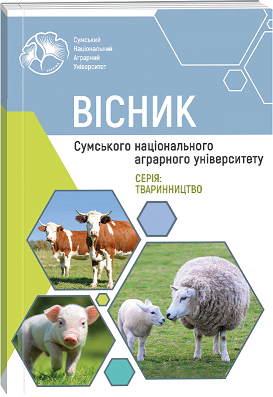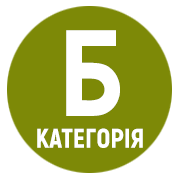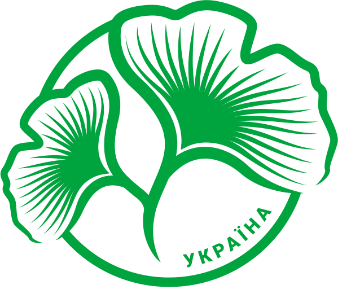MEAT PRODUCTIVITY OF SHEEP DEPENDING ON BREED CHARACTERISTICS
Abstract
Sheep farming is a significant source of meat production. For example, the share of lamb in the country's meat balance ranges from 5-6.5%, and in some regions of the country, where it is an essential product for cooking national dishes, it reaches 30% or more. The successful development of sheep farming largely depends on taking into account the biological characteristics of sheep, which, unlike other ruminants, can consume many more plant species. They are undemanding to feed, using nutritious post-cutting residues and residual pasture vegetation after grazing by other species of animals quite efficiently. The slaughter yield, as one of the main economically useful traits in breeding for increased meat productivity, varied in the groups from 44.2 to 44.9%. The use of industrial crossbreeding of Merino ewes and Dorper rams contributes to an increase in the meat productivity of crossbred lambs in relation to purebred Merino lambs of this flock. In crossbred lambs, the area of the ‘muscle eye’ was 18.9% higher than in purebred counterparts. The results obtained indicate higher meat merits and better carcass quality of lambs of the crossbred group. The meat of the crossbreeds was more mature at the time of slaughter – the maturity coefficient was 43.59%, which is 1.24% higher than in the control. In terms of the amount of protein deposited in the carcass, an increase in its content was noted in crossbred animals. The weight of grade I cuts in absolute and relative terms was the highest in the carcasses of two-breed lambs. The advantage of young lambs of group 2 in this indicator was 16.8%. The meat quality of animals is also determined by the ratio of tissues in the carcass. In the process of studying the morphological composition of carcasses, a clear difference was found between the lambs of the experimental groups. In the carcasses of the crossbred lambs, the flesh content was 11.4 kg, which is 1.5 kg or 15.1% higher than in the control group.
References
2. Balassе, M. Tornero K., & Fabr M. (2020). Sezonnist narodzhennia ovets u mynulykh stadakh [Seasonality of sheep birth in past herds]. Biolohichna ta kulturna spadshchyna neolitychnoi Yevropy, no. 7. P. 1-2. [in Ukrainian].
3. Bezhenar, I.M. (2015). Udoskonalennia rehionalnoho rozmishchennia ta struktury vyrobnytstva produktsii vivcharstva na osnovi yii dyversyfikatsii [Improvement of regional placement and production structure of sheep farming products based on its diversification]. Hlobalni ta natsionalni problemy ekonomiky. no 5. P. 104-110. [in Ukrainian].
4. Bezhenar, I.M. (2021). Otsinka rozvytku haluzi vivcharstva [Assessment of the development of the sheep breeding industry]. Ekonomika APK, no. 2. P. 25-38. [in Ukrainian].
5. Boiko, N.V., Kosova, N.O., Korkh, I.V, & Riazanov, P.O. (2013). Rehionalni osoblyvosti tendentsii rozvytku haluzi vivcharstva ta vyrobnytstva vovny v Ukraini. [Regional features of development trends in the field of sheep breeding and wool production in Ukraine]. Visnyk Dnipropetrovskoho derzhavnoho ahrarnoho universytetu. no. 1(31). P. 93–98. [in Ukrainian].
6. Burhu, Yu.H. (2011). Tovaroznavcha kharakterystyka produktsii vivcharstva [Commodity characteristics of sheep breeding products]. monohrafiia. Poltava: RVV PUET. P.126. [in Ukrainian].
7. Burkata, V.P. (2006). Vivcharstvo Ukrainy.[Sheep breeding of Ukraine], K.: Ahrarna nauka, P. 614. [in Ukrainian].
8. Busenko, O.T., Skotsyk, V.Ie., & Matsenko, M.I. (2013). Tekhnolohiia vyrobnytstva produktsii tvarynnytstva [Production technology of animal husbandry products]. Pidruchnyk. K.: Ahrarna osvita, P. 492. [in Ukrainian].
9. Ibatullin, I.I., Paba,t V.O., & Turynskyi, V.M. (2014). Stan i shliakhy pidvyshchennia eksportnoho potentsialu haluzi vivcharstva Ukrainy [The state and ways of increasing the export potential of the Ukrainian sheep-breeding industry]. Ekonomika APK, P. 13-23. [in Ukrainian].
10. Kaletnik, H.M., Kulyk, M.F, Petrychenko, V.F., & Khorishka, V.D. (2007). Osnovy perspektyvnykh tekhnolohii vyrobnytstva produktsii tvarynnytstva [Basics of promising technologies for the production of animal husbandry products]: navch. posib. Vinnytsia, P. 583. [in Ukrainian].
11. Kalynychenko, H.I., Topikha, V.S. (2017). Tendentsii rozvytku selektsiinopleminnoi roboty u vivcharstvi [Trends in the development of breeding work in sheep breeding]. Visnyk Dnipropetrovskoho derzhavnoho ahrarnoekonomichnoho universytetu, V. 1. P.17-21. [in Ukrainian].
12. Klymenko, M.M., Vinnikova L.H., Bereza I.H., & Honcharov H.I. (2006). Tekhnolohiia mʼiasa ta mʼiasnykh produktiv [Technology of meat and meat products]. K.: Vyshcha osvita, P. 638. [in Ukrainian].
13. Korbych, N.M., Husiev, I.O. (2021). Vik ta pokaznyky produktyvnosti vivtsematok tavriiskoho typu askaniiskoi tonkorunnoi porody [Age and performance indicators of ewes of the Taurian type of the Askanian thin-fleece breed]. Zbirnyk naukovykh prats KhDAU. V 3. P. 7-10. [in Ukrainian].
14. Kytaieva, A.P., Bezaltychna, O.O. (2016). Problemy suchasnoho rozvytku vivcharstva [Problems of the modern development of sheep breeding]. Tvarynnytstvo Ukrainy, no. 1-2. P. 2-4. [in Ukrainian].
15. Papakina, N., Sarana, A. (2020). Osoblyvosti kompleksnoi otsinky ovets tavriiskoho typu askaniiskoi tonkorunnoi porody [Peculiarities of comprehensive assessment of Taurian type sheep of Askanian thin-fleece breed] Kherson DVNZ KhDAU. V. 11. P. 3-4. [in Ukrainian].
16. Paraniak, N.M., Stapai, P.V., I. A. Makar, & Havryliak, V.V. (2005). Produktyvni yakosti pomisei pershoho pokolinnia vid skhreshchuvannia mistsevykh napivtonkorunnykh matok z baranamy porody suffolk [Productive qualities of first-generation hybrids from crossing local semi-fine wool ewes with Suffolk rams]. Vivcharstvo: Mizhvidomchyi temat. nauk. zbirnyk. Kherson, V. 31-32. P. 153- 155. [in Ukrainian].
17. Pokhyl, V., Pokhyl, O., Linskyi, O., & Holynska, O. (2018). Promyslove skhreshchuvannia u vivcharstvi za uchasti porody sharole [Industrial crossbreeding in sheep breeding with the participation of the Charolais breed]. Naukovyi visnyk NUBiP Ukrainy. Seriia: Tekhnolohiia vyrobnytstva i pererobky produktsii tvarynnytstva. P. 148-157. [in Ukrainian].
18. Pomitun, I.A., 2000. Selektsiini metody pidvyshchennia konkurentospromozhnosti porid ovets u rehioni Lisostepu i Polissia [Breeding methods of increasing the competitiveness of sheep breeds in the region of the Forest Steppe and Polissia]. Visnyk ahrarnoi nauky, no. 2. P. 104–105. [in Ukrainian].
19. Slavkova, O.P., Kovalova, O.M. (2017). Perspektyvy rozvytku vivcharstva. Hlobalni ta natsionalni problemy ekonomiky [Prospects for the development of sheep breeding. Global and national economic problems]. V. 19. P. 101-106. [in Ukrainian].
20. Sukharlov, V.O., Derevianko, O.P., 2003. Vivcharstvo [Sheep breeding]. Kharkiv: Espada, P. 256. [in Ukrainian].
21. Suprun, I.O., Hetia, A.A., & Fychak, V.M. (2021). Suchasnyi stan ta perspektyvy rozvytku vivcharstva v Ukraini [The current state and prospects for the development of sheep breeding in Ukraine]. Zbirnyk naukovykh prats «Tekhnolohiia vyrobnytstva i pererobky produktsii tvarynnytstva». no 2. P. 21–31. [in Ukrainian].
22. Susharnyk, Ya. A. (2021). Analiz suchasnoho stanu rynku vivcharstva [Analysis of the current state of the sheep breeding market]. Zbirnyk naukovykh prats Odeskoho natsionalnoho ekonomichnoho universytetu. no. 9-10. P. 286-287. [in Ukrainian].
23. Vdovychenko, Yu.V, Zharuk, P.H., (2019). Henetychni resursy ovets v Ukraini [Genetic resources of sheep in Ukraine]. Visnyk ahrarnoi nauku, no. 5 (794). P. 38–44. [in Ukrainian].
24. Vdovychenko, Yu.V., Iovenko, V.M., Zharuk, P.H., Kudryk, N.A., & Zharuk, L.V. (2016). The state and scientific support of the sheep breeding industry in Ukraine [The state and scientific support of the sheep breeding industry in Ukraine] Naukovyi visnyk "Askaniia-Nova", no. 9. P. 3-16. [in Ukrainian].
25. Vdovychenko, Yu.V., Zharuk P.H. (2013). Stan ta perspektyvy rozvytku haluzi vivcharstva Ukrainy [The state and prospects of the development of the sheep breeding industry in Ukraine]. Visnyk Dnipropetrovskoho derzhavnoho ahrarnoho universytetu, no 1 (31). P. 135–138. [in Ukrainian].
26. Zaruba, K. V., Drozd, S. L (2017). Rezultaty vykorystannia miasnykh henotypiv na vivtsematkakh askaniiskoi tonkorunnoi porody [The results of the use of meat genotypes on ewes of the Askanian thin-fleece breed]. Naukovyi visnyk Natsionalnoho universytetu bioresursiv i pryrodokorystuvannia Ukrainy. Seriia: Tekhnolohiia vyrobnytstva i pererobky produktsii tvarynnytstva, no. 171. P. 15-21. [in Ukrainian].
27. Zharuk, L. V., Koval, T. S., & Kozak, O. A. (2020). Rozvytok svitovoho rynku produktsii vivcharstva. [Development of the world market of sheep breeding products]. Ekonomika APK, no 8. P. 60-71. [in Ukrainian].

 ISSN
ISSN  ISSN
ISSN 



